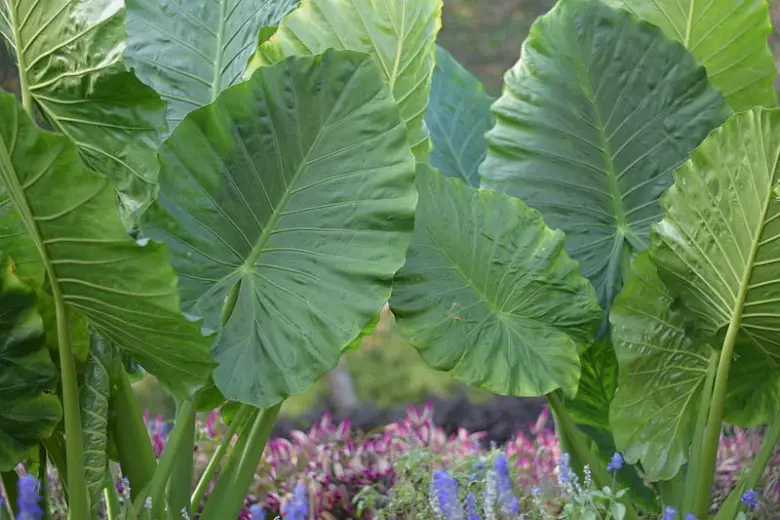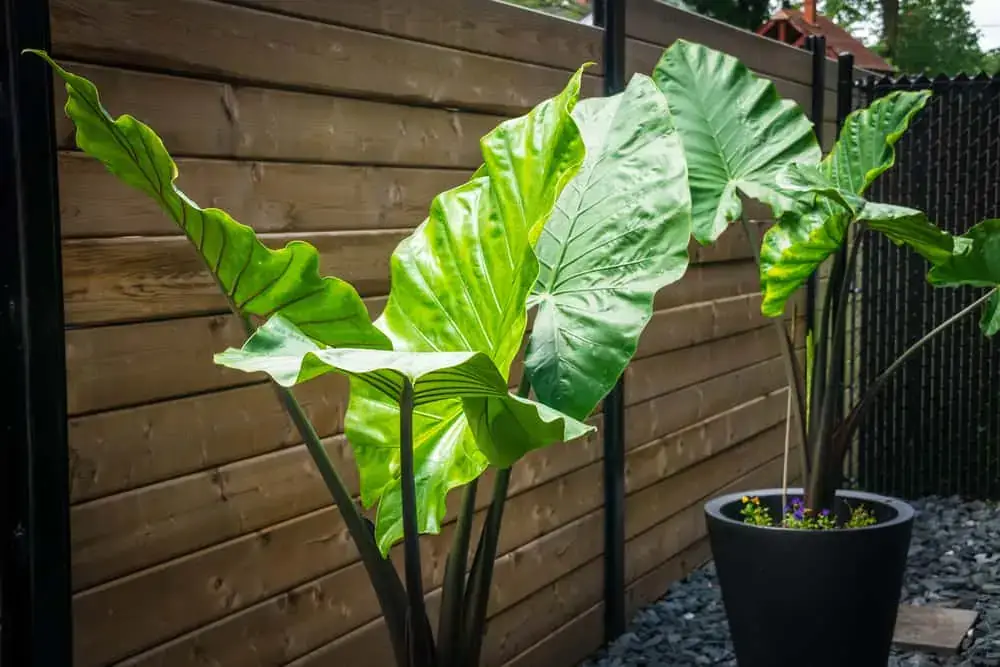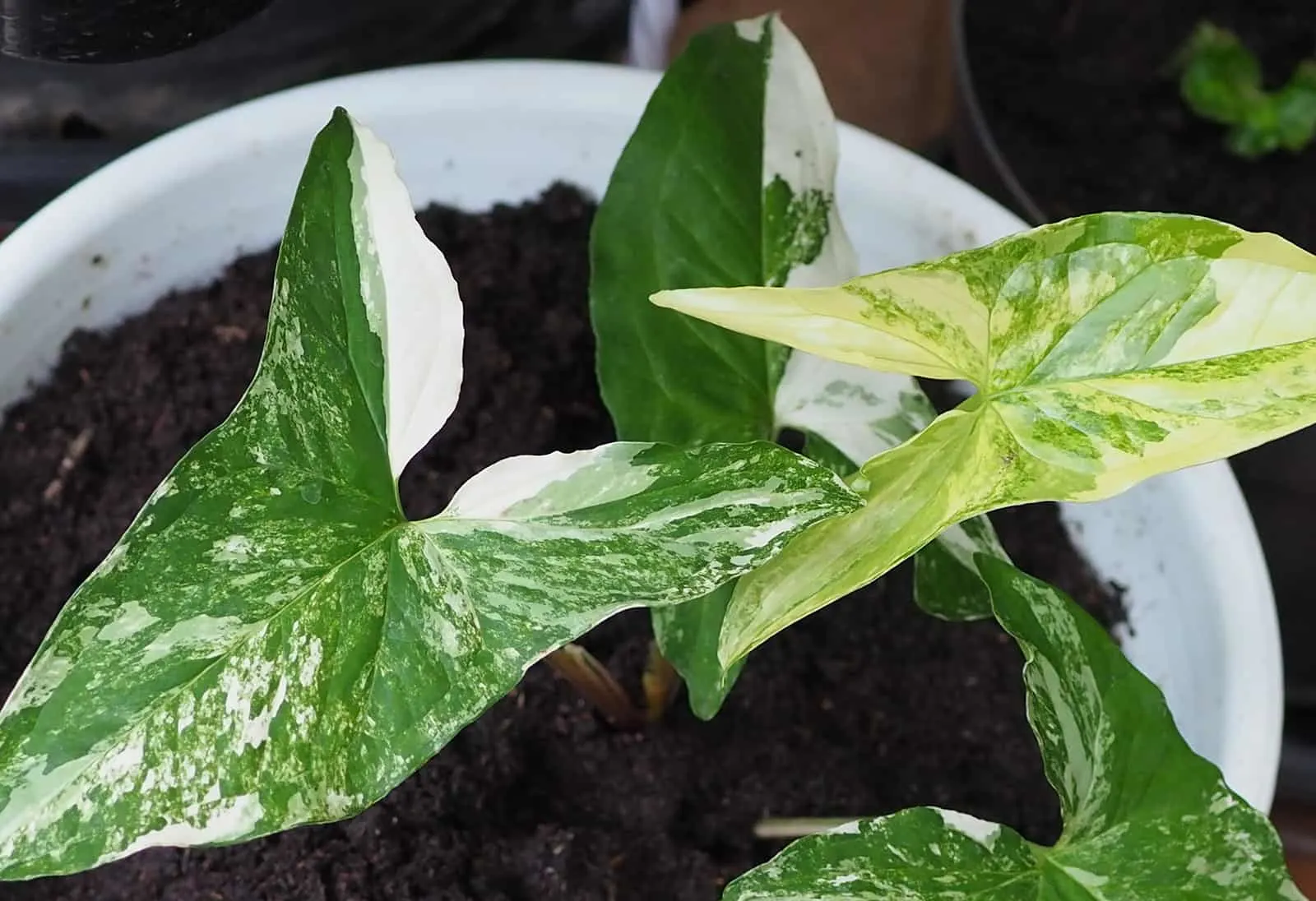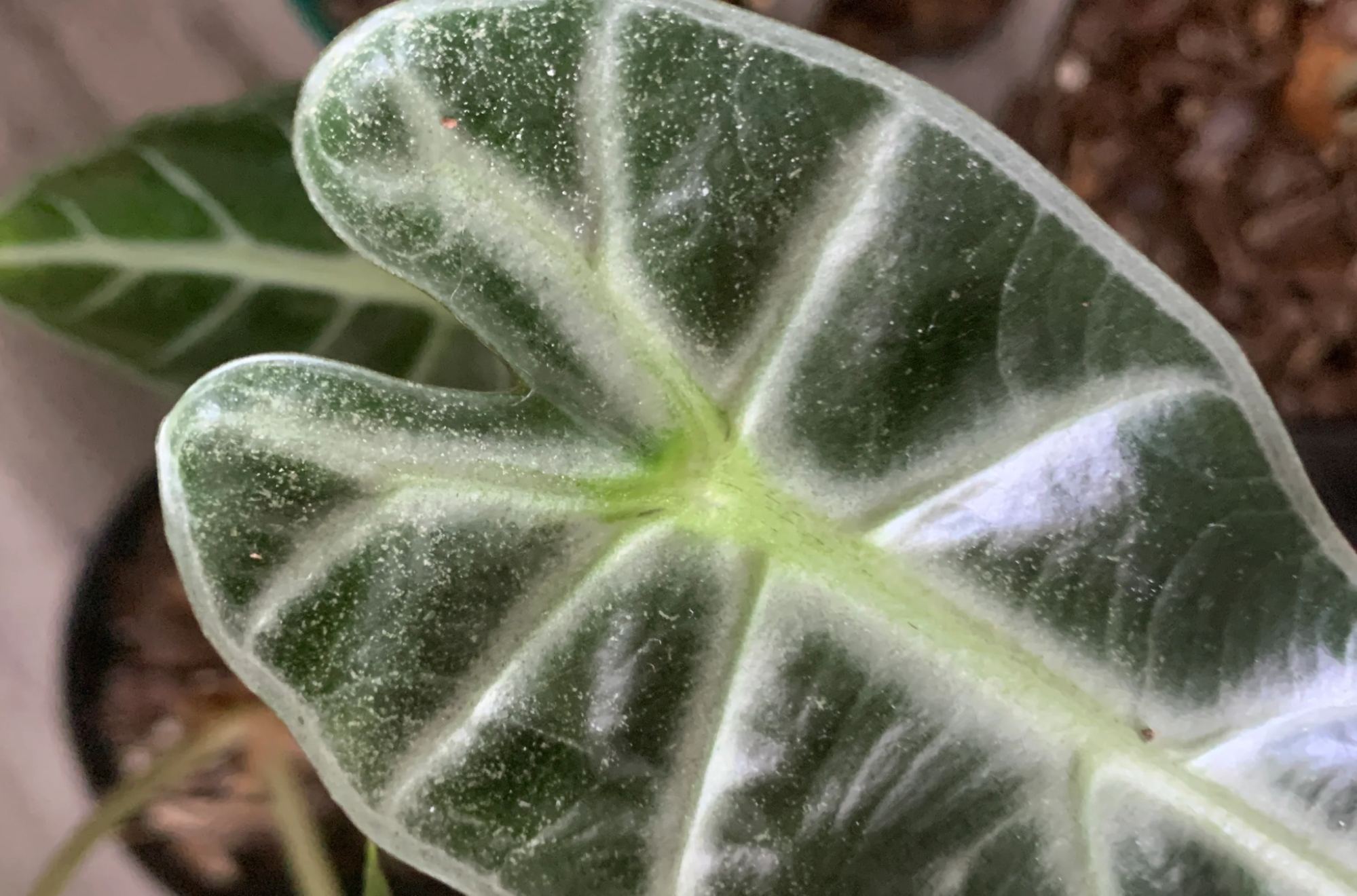Alocasia is a popular kind of plant with gigantic leaves. This plant can increase the beauty of your outdoors even indoors and some are even eaten as vegetables. Since there are many kinds of Alocasias, you might not know the differences.
So, today, we’ll discuss the comparison between Alocasia Odora vs Macrorrihza.
Usually, Alocasia Odora is 4-8 feet tall with a width of 3 feet, while Macrorrhiza is 12-15 feet tall with a width of 6-8 feet. The ideal temperature for Alocasia Odora is 59°F to 86°F. On the other hand, Macrorrhiza grows well where the temperature is between 55° to 85° F. Odora needs slightly acidic and neutral soil with a pH level of 5.5 to 6.6 while 5.7 to 6.3 is the ideal pH level for Macrorrhiza.
An extensive comparison of physical characteristics and gardening characteristics is presented in the article. Without further ado, let’s dig in.
Alocasia Odora vs Macrorrhiza: Comparison of Physical Characteristics
Alocasia Odora and Macrorrhiza are two different species of plants. However, they look similar. But they have some differences in common physical characteristics.
Before discussing the differences in a vast manner, first, let’s have a glimpse of the characteristics.
| Characteristics | Alocasia Odora | Alocasia Macrorrhiza |
| Leaf variegation | White & Silver | Green & Yellow |
| Blooming odor and look | Pleasant odor,
Matte look |
Pungent odor,
Bright look |
| Sinus | Rounded | Pointier |
| Height and width | 4-8 feet high,
3 feet wide |
12-15 feet high
6-8 feet wide |
| Origin | Native to East, southeast Asia | Sri Lanka, India, Indonesia through Southeast Asia |
| Common Names | Night-scented lily,
Asian Taro. |
Giant taro,
Giant elephant ear. |
| Toxicity (presence of calcium oxalate) | Toxic to humans and pets | Toxic to humans and pets |
We will now discuss each of the common characteristics in-depth one by one. Let’s dive in together!

Comparison 1: Leaf Variegation
Leaf variegation is the first difference you can notice between Alocasia Odora and Macrorrhiza. Variegation on Alocasia Odora leaves is predominantly white and silver, while variegation on Alocasia macrorrhiza leaves is green and yellow.
Moreover, the distribution of the variegation on the leaves differs between the two plants. In Alocasia Odora, variegation tends to be evenly distributed across the leaf surface, whereas in Alocasia Macrorrhiza, variegation may be more concentrated in specific areas.

Comparison 2: Blooming Odor And Look
Alocasia Odora and Alocasia Macrorrhiza have notable differences in both blooming odor and look. In terms of appearance, Alocasia Odora has a more subdued and muted appearance with a matte finish. Its leaves are generally smaller and less showy than those of Alocasia Macrorrhiza.
On the other hand, Alocasia Macrorrhiza has a bright, glossy appearance that catches the eye. Its leaves are large and showy, making it a popular ornamental plant.
When it comes to fragrance, Alocasia Odora has a pleasant and sweet-smelling bloom that can be quite enjoyable. In contrast, Alocasia Macrorrhiza has a pungent odor that can be off-putting to some people.
Comparison 3: Sinus
Alocasia macrorrhiza and Alocasia Odora have different sinus shapes. Alocasia Odora’s sinus is more rounded, while Alocasia Macrorrhiza’s sinus is relatively pointier.

Comparison 4: Height And Width
The height of Alocasia Odora is 4-8 feet and the width of 3 feet. On the other hand, Alocasia Macrorrhiza reaches 12-15 feet in height with 6-8 feet in width. This means that Alocasia Macrorrhiza is approximately three times taller and twice as wide as Alocasia Odora.
Therefore, Alocasia macrorrhiza is a better choice for a garden or outdoor space if you are looking for a larger plant. The Alocasia Odora is a better choice if you prefer something smaller and more compact.
Comparison 5: Origin
While Alocasia Odora primarily occurs in East and Southeast Asia, Alocasia macrorrhiza also occurs in Southeast Asia. Also, Alocasia Macrorrhiza is found in Sri Lanka, India, and Indonesia which is not part of the native range of Alocasia Odora.
Comparison 6: Common Names
Alocasia Odora is commonly known as the night-scented lily or Asian taro, while Alocasia macrorrhiza is known as the giant taro or giant elephant ear.
This is because , both plants belong to the Alocasia genus and have large, showy leaves. However, Alocasia Macrorrhiza has much larger leaves than Alocasia Odora, hence it’s the common name “giant taro” or “giant elephant ear”.
On the other hand, Alocasia Odora emits a sweet, nighttime fragrance, hence its common name “night-scented lily”. As a vegetable, it is also commonly known as “Asian taro”.
Comparison 7: Toxicity
Both Alocasia Odora and Alocasia Macrorrhiza are known to be toxic to both humans and pets when it’s raw. However, the specific nature and degree of their toxicity may differ.
Alocasia Odora is known to contain calcium oxalate crystals that can cause skin irritation, itching, and burning sensations. On the other hand, Alocasia Macrorrhiza also contains calcium oxalate crystals.
Alocasia Odora vs Macrorrhiza: Comparison of Gardening Factors
Now that you know how common physical characteristics compare, let’s move on to the gardening section. In case you’re unsure of which of these plants to plant, then this section will be of great assistance to you.
Let’s take a look at the factors you should consider before choosing one for your garden.
| Factors | Alocasia Odora | Alocasia Macrorrhiza |
| Soil | Potting soil, perlite, peat | Potting soil, perlite, peat |
| Light | Bright, indirect light | Bright, indirect light |
| Ideal temperature | 59°F to 86°F | 55° to 85° F |
| Humidity | 60% or more | 70% or more |
| Soil pH | 5.5 to 6.5 | 5.7 to 6.3 |
| Watering | Once every 3-4 weeks | 2 times every week |
| Fertilizer | Diluted complete liquid fertilizer & slow-release fertilizer | Liquid houseplant fertilizer 20-20-20 |
| Pruning | Doesn’t need | Needs |
| Repotting | Once a year | Every 2 to 3-year |
| Propagation | Easy | Easier |
| Pests & Diseases |
|
|
Comparison 1: Soil
Plants of the Alocasia Odora and Alocasia Macrorrhiza require the same potting materials, such as perlite, potting soil, and peat. In addition to ensuring proper drainage and moisture retention, these materials also provide essential nutrients to the plant. Therefore, both Alocasia Odora and Alocasia Macrorrhiza can benefit from the same potting mix, which uses potting soil, perlite, and peat, in the appropriate proportions. You can also make raised bed over a tree stump for growing them.

Comparison 2: Light
Alocasia Macrorrhiza and Alocasia Odora have similar lighting requirements. Direct sunlight can burn their leaves, while insufficient light can cause stunted growth and poor development.
Therefore, Alocasia Macrorrhiza and Alocasia Odora should be placed in places with bright, filtered light, such as near a window with a sheer curtain or in a room with plenty of natural light. On the other hand, you have to remember one thing lack of proper sunlight is also a reason for firestick plants not being red.
Comparison 3: Ideal Temperature
Alocasia Odora prefers temperatures between 59° and 86° Fahrenheit, while Alocasia macrorrhiza prefers temperatures between 55° and 85° degrees Fahrenheit. Both plants thrive in warm and humid conditions, but Alocasia macrorrhiza can tolerate slightly cooler temperatures than Alocasia Odora.
While both plants are susceptible to cold temperatures, it’s important to protect them from frost or prolonged exposure to temperatures below their ideal temperatures. If they are put in cold temperatures, they can die.
Comparison 4: Humidity
Alocasia Odora and Alocasia Marrorrihza are both tropical plants that thrive in high humidity. The humidity level of Alocasia Odora must be at least 60%, while the humidity level of Alocasia Marrorrihza should be at least 70%.
You may need to mist these plants regularly or use a humidifier to maintain appropriate humidity levels.
Comparison 5: pH Level of Soil
When comparing the required pH levels for Alocasia Odora and Alocasia Macrorrihza, we can see that both plants have different pH range requirements.
Alocasia Odora requires a pH level of 5.5 to 6.5, while Alocasia Macrorrihza requires a pH level of 5.7 to 6.3. In other words, both plants grow best in slightly acidic to neutral soil conditions.
Comparison 6: Water
These two plants have different watering habits. Alocasia Odora requires watering once every 3-4 weeks which is less frequent. On the other hand, Alocasia Macrorrhiza requires more frequent watering, you need to water it 2 times per week.
However, you must water Alocasia Macrorrihza properly, not over or under. Because overwatering can make your plant sick on the other hand, underwatering can cause the leaves to turn yellow. It is also the cause of plumeria stem wrinkled.
Also, make sure that the plants won’t sit in water for long. It’s likely to develop root rot if left in water for too long. It’s also applicable to Alocasia Odora.
Comparison 7: Fertilizers
Alocasia Odora and Alocasia macrorrhiza have different fertilization requirements. Alocasia Odora requires both diluted liquid fertilizer and slow-release fertilizer, while Alocasia Macrorrhiza only requires liquid fertilizer.
Therefore, Alocasia Odora fertilization is more complex than Alocasia Macrorrhiza fertilization.
Comparison 8: Repotting
Another difference between Alocasia Odora and Alocasia Macrorrihza possess is a repotting habit. Alocasia Odora requires repotting only once a year, whereas Alocasia macrorrhiza needs to be repotted every 2-3 times a year.
Comparison 9: Pruning
Alocasia Odora does not need pruning, while Alocasia macrorrhiza requires pruning. Therefore, maintaining Alocasia Macrorrhiza’s growth and appearance may require more effort and attention, including regular pruning.
Keeping Alocasia macrorrhiza pruned consistently is the key to controlling its growth and spread. Regular pruning is necessary as this is a fast-growing species that can reach a considerable size. Overgrown plants may result from not pruning regularly.

Comparison 9: Propagation
If you’re planting your Alocasia Odora outdoors, you can easily propagate using its rhizomes. You need to dig 12 inches, then lift the plant carefully from the ground surface to expose the long tubers located just beneath the soil surface. New Alocasia Odora plants can be propagated from these tubers.
On the other hand, to propagate your Alocasia Odora indoors, start by digging just enough to access the rhizomes without harming the roots. Brush away the debris and carefully remove the soil from the tubers and separate the tubers. It is best to plant tubers in their pots with a rich, moist potting mix.
For Alocasia Macrorrihza’s propagation, you can use seeds, stem cuttings, or basal division. Among all of them, basal division happened to be the easiest one.
To propagate this plant using basal division, you need to uproot the entire plant and check if there are any tubers available. Once you’ve located the tubers, separate them from the main plant. Make sure to water each tuber well after planting it in the ground or a pot.
Comparison 11: Pests And Diseases
Alocasia Odora and Alocasia macrorrhiza are susceptible to different types of pests and diseases. Alocasia Odora may suffer from Mealybugs, Aphids, Spider Mites, Root rot, Xanthomonas, and Leaf spot.
In contrast, Alocasia macrorrhiza may be affected by Botrytis, Spider Mites, Root rot, Leaf spot, Powdery mildew, Southern blight, and Xanthomonas. Therefore, both species are subject to root rot, leaf spot, spider mites, and Xanthomonas.
So, Which One to Pick?
Alocasia Odora and Alocasia Macrorrihza both are highly popular and determining which plant is better for you ultimately depends on your personal preferences and specific needs.
To make a decision, you need to assess your requirements. Macrorrihza contains a pungent odor, so if you want a pleasant aroma from your garden, choose Odora instead.
Then, if you don’t want that the plant to spread inside the garden vastly, you should go for Alocasia Odora because Macrorrihza is bigger and wider than Odora.
Macrorrihza would be an ideal choice if you live in a low-temperature area since it requires less temperature than Odora. Similarly, you should plant Odora if your area is less humid. The differences between these two are not significant though.
If watering seems like a hassle for you, Odora would be a holy grail for you since it requires watering once a month. Also, it doesn’t need pruning like Macrorrihza. As a result, you can decorate your garden with Alocasia Odora.
In case you’re still unsure, you can try both plants and choose whichever is most appealing to you. People’s opinions vary, so the best advice I can give is to try them out for yourself.
Frequently Asked Questions (FAQs):
What Is The Rarest Alocasia?
Alocasia Maharani is known as the rarest Alocasia. In addition to its common name, it is also known as the gray dragon. It is a unique Alocasia variety with muted, slivery deep green leaves. Unlike other plants in the genus, it is relatively small, with a maximum height of 14 inches, and leaves that grow up to 6 inches long.
What Is The Lifespan Of Alocasia?
An average lifespan of an Alocasia is around 5 years. As it can be propagated through divisions, you can continuously cultivate new and youthful Alocasia plants. However, it can be decreased or increased with or without proper care.
How Do You Make Alocasia Bushy?
If you want to make your Alocasia bushy, you must keep it in the brighter sun. Also, it will help to further growth. Excessive exposure to sunlight can lead to leaves getting burnt, while insufficient light can cause the loss of leaves and their vivid hues.
Conclusion
Finally, we have come to the end of this delicate discussion. I hope you’ve got to know the detailed comparison of Alocasia Odora vs Macrorrihza.
Whatever plants you choose for your garden, you have to provide an optimal growing environment. Otherwise, it won’t grow up properly. Also, you need to ensure proper care for ultimate growth. Best wishes for your venture!
- Why Are There Still No Tomatoes in My Tomato Plants? Let’s Fix the Issue! - July 13, 2023
- Water Propagation White Stuff on Roots: Everything You Should Know! - July 11, 2023
- String of Dolphins Drying Up: Solved! - July 11, 2023
